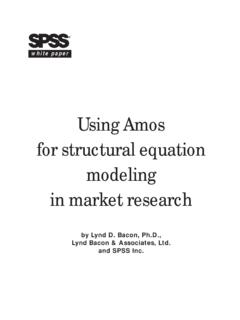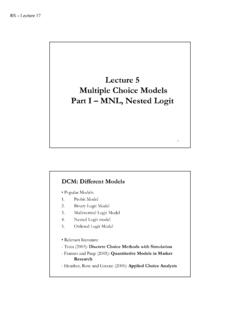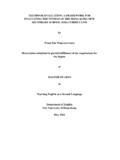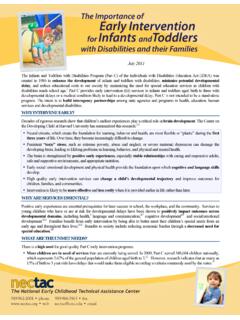Transcription of THE PERCEPTION AND EVALUATION OF VISUAL ART
1 EMPIRICAL STUDIES OF THE ARTS, Vol. 26(2) 197-218, 2008 THE PERCEPTION AND EVALUATIONOF VISUAL ARTHENRIK HAGTVEDTU niversity of Georgia, AthensREIDAR HAGTVEDTG eorgia Institute of Technology, AtlantaVANESSA M. PATRICKU niversity of Georgia, AthensABSTRACTV isual art is a complex stimulus. Drawing on extant theory that the interplayof affect and cognition evoked by a stimulus drives evaluations, we developa generalizable model for the PERCEPTION and EVALUATION of VISUAL art. Inthree stages, we develop scaled measurements for the affective and cognitivecomponents involved in the PERCEPTION of VISUAL art and present a structuralequation model that integrates these components in art nature of art has been a topic of philosophical interest since the days of theancient Greeks.
2 Yet the experience of art, and consequently the PERCEPTION andevaluation of art, seems particularly challenging to comprehend within a scientificframework. Previous research has nonetheless made much progress towarda psychological understanding of art PERCEPTION and aesthetic appreciation(Funch, 1997). The current research builds on this work to develop a struc-tural model for the PERCEPTION and EVALUATION of VISUAL art. Since the visualexperience of art arguably includes both cognitive and emotional components(Baltissen & Ostermann, 1998; Silvia 2005a), the proposed model incorporatesboth these 2008, Baywood Publishing Co.
3 , : research relies on VISUAL art, specifically paintings, as stimuli. Further,it is restricted to participants without formal art training, because it seems reason-able that different types of training may affect cognitive judgments enough tounduly complicate a general model. Indeed, Bezruczko and Schroeder (1994)noted that professional artists and non-artists differ on various dimensions ofvisual preferences. Silvia (2006) similarly noted that although people high andlow in training make the same emotional appraisals of art, they differ in theirappraisals of what makes art interesting.
4 Thus, it seems reasonable to concentrateon the untrained category of viewers first, while the effects of training may beadded at a later stage. After all, some form of art appreciation appears to be ageneral human phenomenon (Dutton, 2002; Tansey & Kleiner, 1996), whiledifferent schools of art may have more specific influences on how artworks areperceived and is generally referred to as the process of making sense of the worldaround us. It involves the acquisition, interpretation, selection, and organizationof sensory information. Since Plato s allegory of the cave, explained in theRepublic, the importance of PERCEPTION in understanding a human being s inter-action with the world has been well established.
5 Although PERCEPTION is dependenton a host of physiological ( , age, health, hunger) and social ( , culturaldifferences, social roles, self-concept) factors, the PERCEPTION of art itself is acultural universal (Dutton, 2002).Given the complexity and variety of art, it may seem na ve to attempt to capturethe PERCEPTION of VISUAL art in a single model. However, the present researchrepresents an initial attempt at this endeavor. For the purposes of this research ,we characterize art PERCEPTION as the acquisition, interpretation, and organizationof the affective and cognitive elements stimulated by an artwork and the interplayof these elements in forming the EVALUATION of art.
6 After a brief discussion aboutwhat constitutes art in the context of this research , as well as a theoreticaldiscussion of the interplay between affect and cognition, scales are developedfor both emotions and perceived attributes involved in the PERCEPTION of visualart, and a structural equation model is presented that integrates these componentsin the EVALUATION ARTAn antecedent to the notion of art as a distinct category was merely theperceived difference between nature and human activity, and throughout much ofhistory the modern distinction between art and craft was virtually nonexistent(Hauser, 1999).
7 During medieval times, painting and sculpture were taught inartisans guilds, music was often placed in the same category as math, and poetrywas grouped with rhetoric and grammar. It was not until the mid-eighteenthcentury that Abb Batteux presented a separate classification of fine arts con-sisting of music, poetry, painting, sculpture, and dance (Shrum, 1996). One of the198 / HAGTVEDT, HAGTVEDT AND PATRICK distinguishing marks of these disciplines was that they had pleasure ratherthan utility as the main goal, and their classification as the fine arts came to bedisseminated throughout the notion of art as a special category of human activity, with a uniqueinfluence on viewers, still remains.
8 However, it seems doubtful whether scholarswill ever agree on a definition for this category. For instance, Wartenberg (2006)discusses 29 different perspectives on what does or does not constitute draws on philosophical viewpoints describing art as imitation (Plato), redemption (Nietzsche), or the communication of feeling (Tolstoy), to morerecent views of art as fetish (Adrian Piper) or virtual (Douglas Davis).However, in the current context it seems appropriate to define art from theviewers perspective: that art is that which is categorized by the viewers assuch (Bourdieu & Darbel, 1997; Dewey, 1989).
9 In a descriptive survey conducted by Hagtvedt and Patrick (2008), 77 par-ticipants representative of our sample population were given a sorting task andasked to distinguish art images from non-art images and to describe why theyconsidered certain images to be art and others to be non-art. A variety of artworks,ranging from Renaissance to modern works, were used as stimuli. Respondentsconsistently asserted that art images are expressive ( emotion, expression ),that the manner of creation is a central feature of an artwork ( talent, creativityand skill, I couldn t do it ), while making a statement without this manner( symbol.)
10 Not creativity and skill ) is not enough to constitute art. Based onthese self-reports, on a review of art history ( , Tansey & Kleiner, 1996), andon our own experience and research , we suggest that artworks may be identifiedas works perceived as embodying human expression, where a perceived mainfeature of the work is the manner of its creation and/or execution rather thanjust a concept, idea, or message underlying it or conveyed by it, and where thismanner is not primarily driven by any other contrived function or utility. Otherworks may depend on a context, such as being placed in a gallery, for theirimpact, but in the current research it seems more useful to focus on worksconsidered to be art by the viewer whether they are hanging in a museum oranywhere BACKGROUNDIn this section, we discuss the conceptual background for the main componentsof the art PERCEPTION and EVALUATION process: cognition and.
















